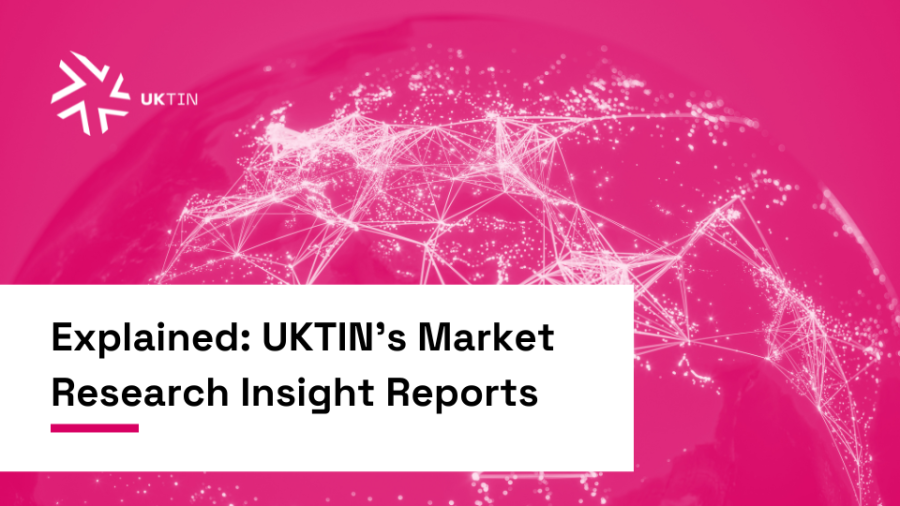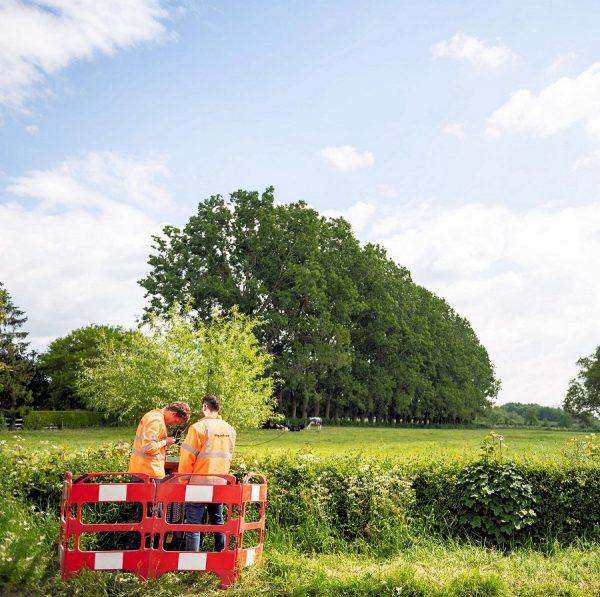
The UK’s telecoms market is thriving but understanding how the ecosystem is innovating can be difficult, especially considering the rapid advancements in academia. UKTIN is therefore creating Market Research Insights Reports delving into all areas of the sector: bringing together industry, government and academia, the network is uniquely positioned to collate, assess and relay this information, aiming to overcome fragmentation in the sector and inform future activity. We spoke to representatives from Digital Catapult and the University of Bristol, where the data for is being compiled and analysed, to learn more.
1. Please tell us about the market research insights reports.
Lorraine During, Lead for Market Research, Digital Catapult: The reports are an opportunity to delve more into the ecosystem and activities that are taking place in UK telecoms. It is a chance to learn more about the different sub-sectors within the space and where things will likely end up in the future. The reports are made up of empirical evidence and data that provide a perspective of how things are currently looking across industry and academia. The reports have been produced by technical and business experts from both Digital Catapult and University of Bristol, and their knowledge has helped to inform the collation and analysis of the data.
Tom Barratt, Lead System Architect, University of Bristol: In terms of the data analysis, the report pulls in various sources and shows where funding has been going over the last few years and presents a current snapshot. It is really helpful to see how large the funding pools have been, for example. They provide a fantastic snapshot of what’s happening right now across the ecosystem.
2. What data sources did you use?
During: We used a range of sources and multiple databases for the market research insights reports, incorporate both quantitative and qualitative analysis from different elements of the R&D&I ecosystem. These included: desk research, database analysis, expert interviews, webscraping and manual data entry. Databases consulted included both UKRI and CORDIS (Horizon 2020).
Barratt: One of the challenges for this exercise is actually the vast array of data sources that are available; a large part of the value these market insights reports bring is that UKTIN has done the heavy lifting in terms of identifying available sources, verifying their accuracy and triaging the most valuable. We have used data from sources such as the Gateway to Research (GtR) and UKRI to name just a few.
The market insights reports are ultimately feeding into a broader piece of work University of Bristol is leading: creating a discovery toolkit to help individuals and organisations run their own queries from trusted sources of data. The first stage of that is our signposting tool which shows some of the public sources of data that have informed these reports.
3. How difficult was it to source and collate the data?
Barratt: There is a lot of early-stage research across the sector and sometimes it is hard to decipher where - or if - this fits into the part of the puzzle. There have been some fun solutions created using data science to solve these challenges.
During: From a public data perspective,we found that there is a lot of data out there. Due to the nature of some sub-sectors being more mature than others, there can either be a vast amount of data, which can be time-consuming to sort through, or if it is a niche subject, there can be far less data, which creates a different kind of challenge. Traditional topics such as wireless tend to have more data, whereas with AI, at least at the moment, there is less. However, all areas are growing and more data is being added daily.
Precise data on available private R&D&I was limited, as we expected: this information is commercially sensitive and access is typically restricted. We were able to source some data from documents like commercial annual reports and white papers, but significantly less so than data on public funding.
Jessica Rushworth, Chief Strategy & Policy Officer, Digital Catapult: This is why we must supplement the quantitative data with the qualitative insights. In the creation of the reports we have engaged a wide range of experts from within the consortium and its networks, ensuring that we’re not just providing a set of data but a meaningful snapshot of the current ecosystem.
4. How can people use the reports?
During: The reports enable readers to have a good understanding of the activities that are being funded by public sources. They reveal some of the most popular topics that are currently being researched by experts in the field, giving insight into what is being looked into at this point in time. They also give insight into where the UK stands in telecom innovation compared to our international counterparts.
Rushworth: The reports provide a great summary of the topics, both for experts and non-experts. Importantly, they are also easy to read.
5. Were any of the insights particularly interesting or surprising?
Barratt: This is only the early stages but the biggest thing is seeing how everything is interlinked. The targeted funding in the telecom sector shows a wealth of projects to move the sector forward to support the future generation of telecomunications. One of the elements I think has come out loud and clear from the insights is the degree of collaboration - funding is often split across many institutions in a variety of different regions across the UK. This really demonstrates the power of co-innovation that exists in our ecosystem and it’s been heartening to see that all regions and nations of the UK are contributing to the future of telecoms.
During: Yes, a lot of the activities are multi-partner, often between industry and academia. Our work is helping to pool knowledge to advance the field in the best way, which is brilliant.
6. How does this work fit into developing a UKTIN Research Capability Discovery Service?
Barratt: The reports are a building block, giving us insights through both interviews and analytics. They will act as a benchmark for UKTIN’s Research Capability Discovery Service. The reports can also be used as quantitative analysis, showcasing what we can analyse before going to the discovery tool to find out more information. A key part of the service is to allow users to discover new associations in areas of interest. Some ways we are going about that is having capability to answer questions about the UK ecosystem, enabling the user to do things like: find answers to questions about which organisations are working in a particular field, and finding connections between organisations. There is a wealth of information available and this tool will allow the users to integrate the data in advanced ways.









